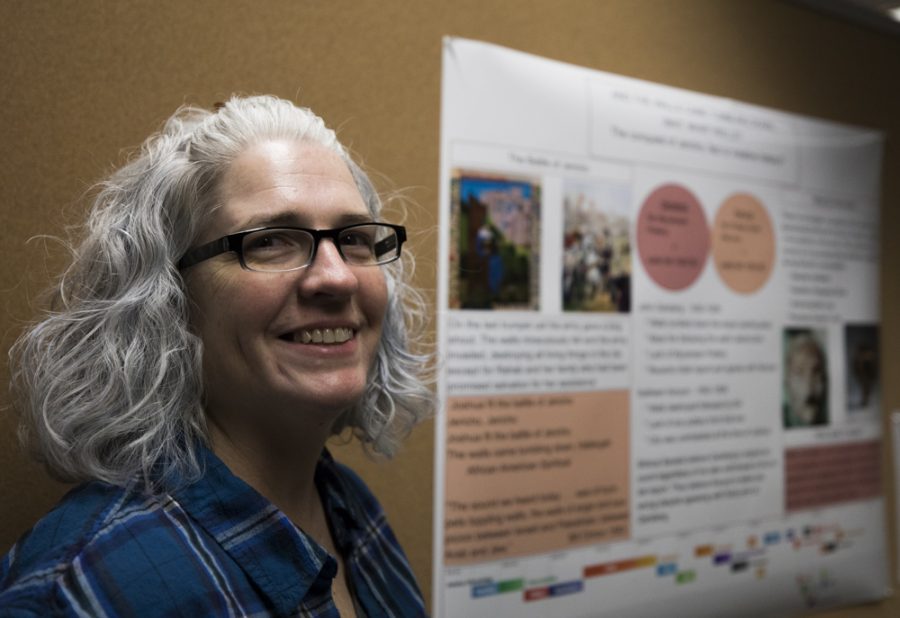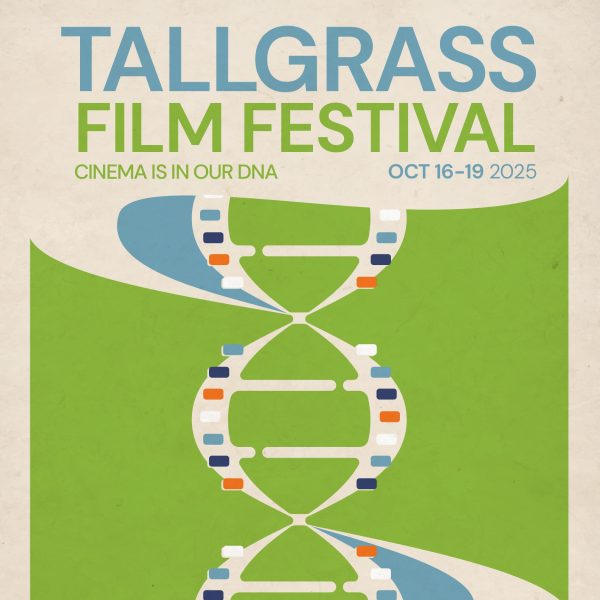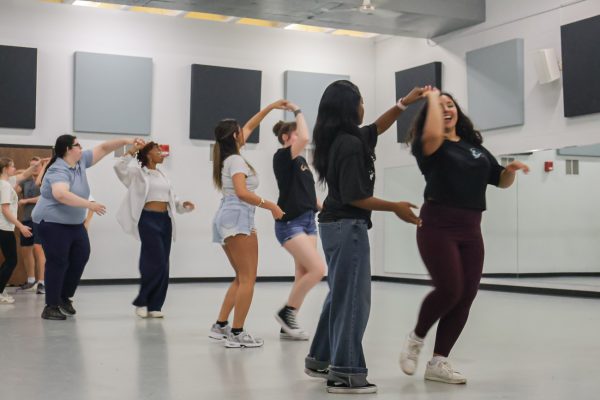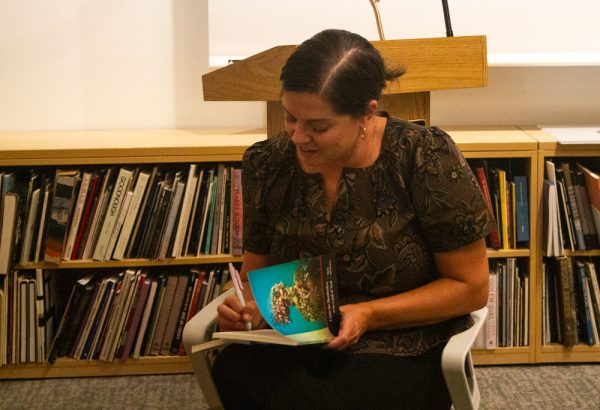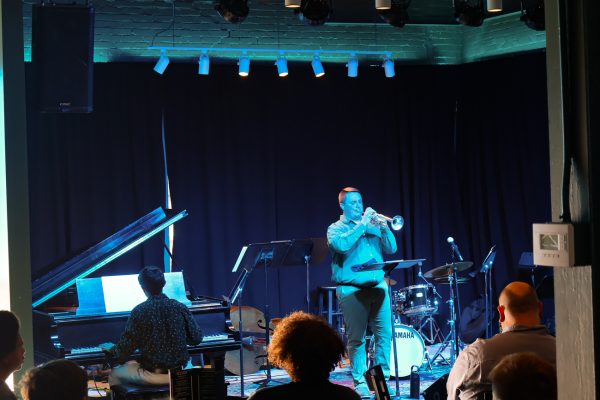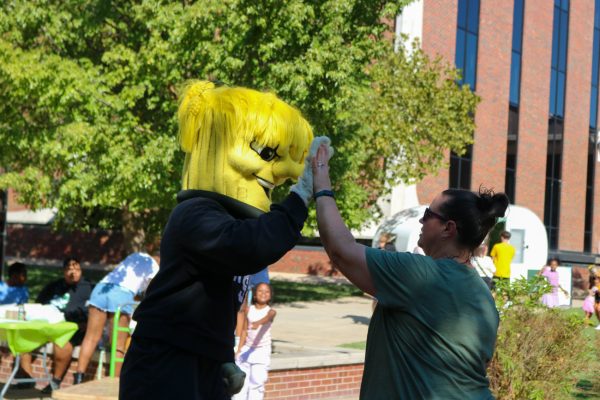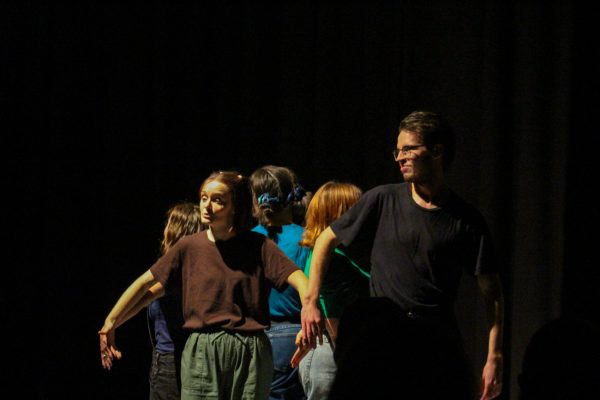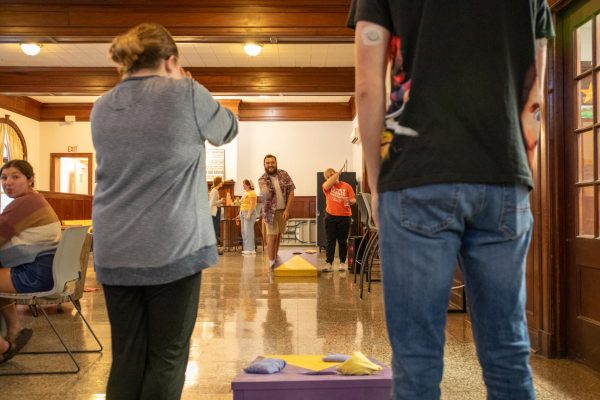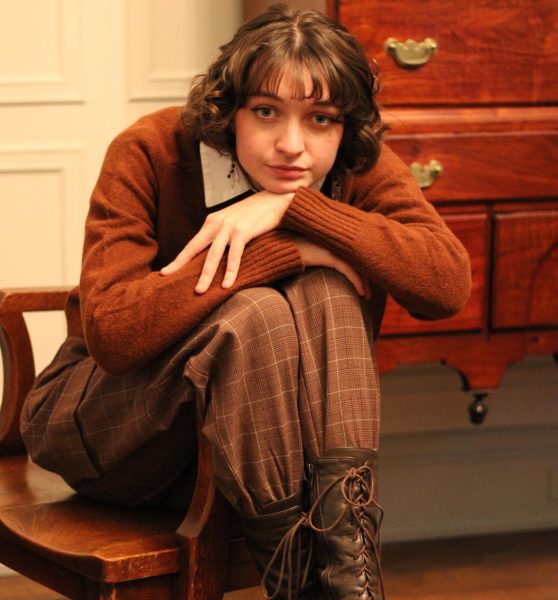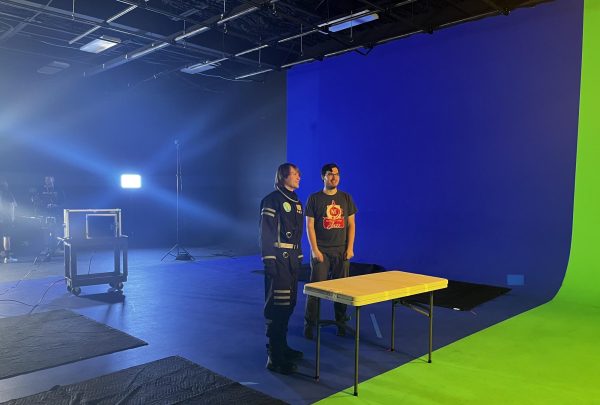‘Archeology and the Bible’ class gives students new perspectives on religion
Rachel Yanko poses with her poster, in Ablah Library, she made as part of the “Archeology and the Bible” class.
In many religions courses at WSU, students will learn about one specific religion or study one specific text in relation to a religion. For Rannfrid Thelle, women’s studies and religions professor, teaching a class that can delve into different intersections of religion is important.
In Thelle’s course “Archeology and the Bible,” students learned about the intersection between the Bible as a text and the material relations of archeology as signifiers for the past.
“There’s a long history of why people have been interested in the archeology of the middle east or the biblical lands,” Thelle said. “It would only have had that kind of interest over the last couple of hundred years because of the Bible and the importance of the Bible in western culture.”
Thelle said this was the basis for the course and students then created a final project where they compared the actual artifacts with what is said in the Bible.
Rachel Yanko, anthropology graduate student, chose the topic of Jericho’s Wall to focus on.
“I really wanted to show what Jericho meant in the landscape of the time rather than just in the biblical reference of it,” Yanko said. “Then I found that the biblical reference was so iconic in our everyday life, politically, not just religiously, and in song, that there was so much more to it than just the actual story in the Bible and then what the archeologists found.”
For the final, students created posters presenting their research on each topic and then held a conference in Ablah library. During the conference, students could come by and talk one-on-one with the presenters to learn about their projects and research. Thelle and Nathan Filbert, library research assistant, were also available to speak with passerby about the class and project.
“Something that I really took from the class and from these presentations is that it opened up a new perspective for looking at things,” Carly Bahner, psychology student, said. “A lot of times people will focus so much on trying to prove or disprove stuff, but that’s not what archeology is about. It was cool to realize that that’s not always the point.”
Both Yanko and Bahner hope that students will take the time to look at their projects and gain a new perspective on the relationship between biblical text and real archeological finds.
“We tried really hard to make the posters as self-evident as possible,” Yanko said. “We put together enough information for students to be able to walk by and stop and read it without being too inundated by the details, so hopefully, students enjoy the work.”
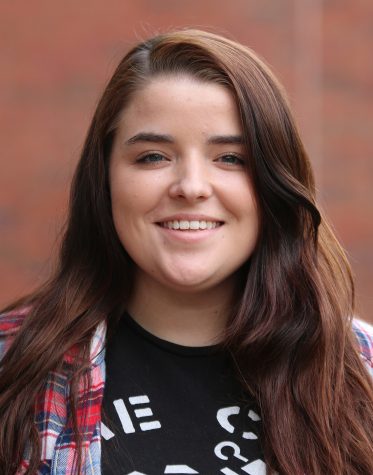
Marissa Campbell was the Culture Editor for The Sunflower. Campbell wrote music reviews as well as arts, culture and other entertainment stories. From...



